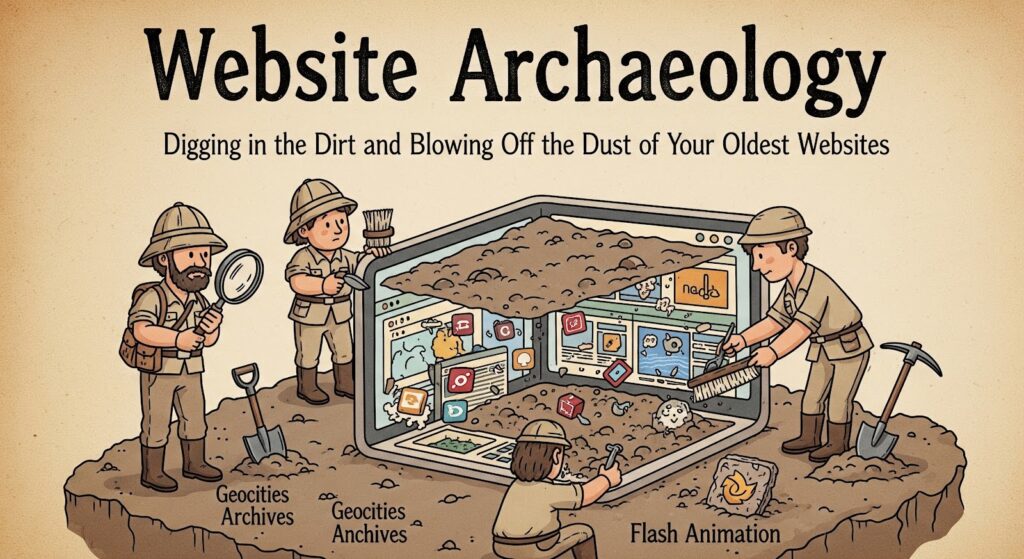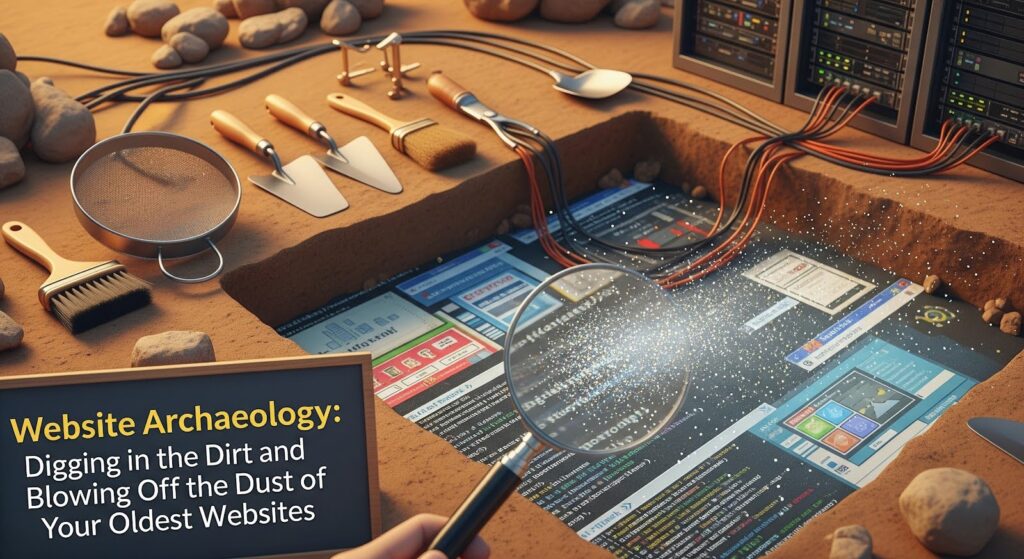Every university’s digital estate has its buried treasures and skeletons: forgotten microsites, half-retired CMSs, and the occasional PDF that hasn’t seen daylight since the 90s. These relics sit quietly in server corners, gathering digital dust, until one day someone stumbles across them.
At first glance, this might sound quirky or even nostalgic. But in reality, web archaeology is serious business.

Buried Sites, Big Questions
When we start digging into a client’s web estate, some of the first questions are:
- Who actually owns this site? Is it still relevant, or has the responsible staff member moved on years ago?
- Does it meet today’s accessibility standards? (Spoiler: often, it doesn’t!)
- What about compliance? Old privacy policies, broken links, or outdated security settings can all be lurking in the shadows.
And perhaps the biggest question: how do you transform decades of digital sprawl into something coherent, without erasing the institution’s history?

Stories From the Trenches
Working with universities around the world, we’ve seen it all:
- Surprising discoveries: entire microsites still live and indexed, long after the project or department closed.
- Hidden treasures: valuable resources, articles, or heritage content buried where no one could find them.
- Quick wins: retiring dozens of outdated sites that were draining resources and confusing users.
Each discovery brings challenges but also opportunities to streamline, clean up, and modernise.

From Messy Portfolios to Managed Estates
This is where the real value of “website archaeology” shines. With the right tools and governance, those messy portfolios become:
- Accessible – meeting modern WCAG standards.
- Compliant – aligned with current privacy and security requirements.
- Navigable – allowing students, staff, and the public to actually find what they need.
- Historic yet usable – preserving institutional memory without sacrificing clarity or performance.
At Little Forest, we’ve helped universities map out their estates, uncover hidden sites, and bring order to the chaos.

Why These Digital Artefacts Matter
Your web estate is more than just a collection of pages. It’s the living history of your institution; a mix of legacy projects, long-forgotten experiments, and the brand you present today. If left unmanaged, that history can become a liability. But approached with care, it becomes an asset.
Like any good archaeologist, the trick isn’t just finding what’s buried, it’s in knowing what to preserve, what to catalogue, and what to retire.
Interested in doing a bit of “web archaeology” in your own estate?
We’d love to help you dig! Please get in touch, email us on [email protected]












